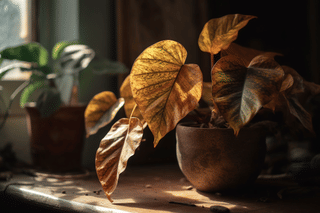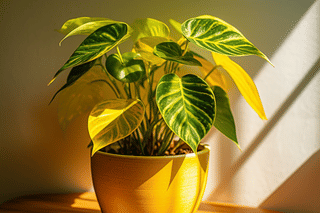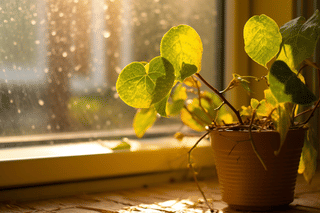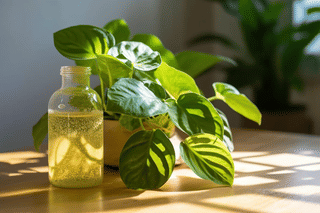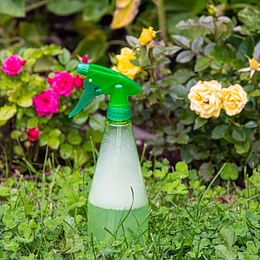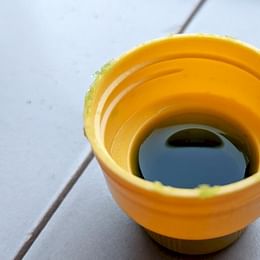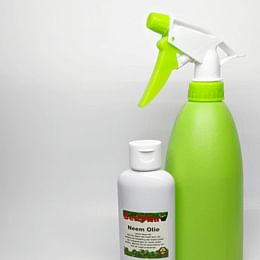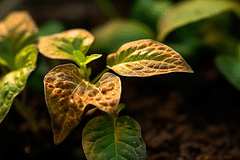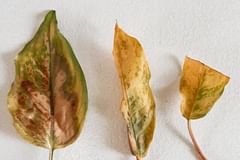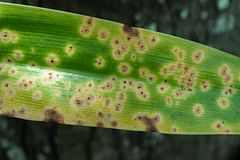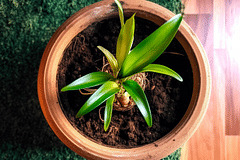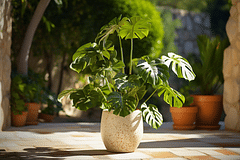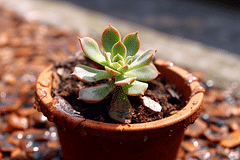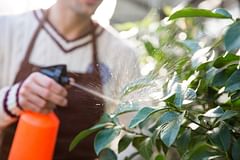Why are my houseplant leaves turning yellow?
Discover the reasons why your houseplant leaves are turning yellow and learn step-by-step how to nurse your plants back to health. Our comprehensive guide includes simple, easy-to-understand advice for beginners and seasoned plant owners alike. Keep your indoor garden thriving with our expert plant care tips.
As a houseplant owner, seeing my plants' leaves turning yellow can be really discouraging. It's hard not to worry that something might be wrong with my plants!
Yellowing leaves can be caused by a few different issues. For example, it might be due to too much water in the soil, or it might need some more nutrients. All hope isn't lost though. In this plant care guide, we're going to explore the most common causes of yellow leaves in houseplants and tips on how to fix them so that I can get my healthy plants back!
These are the causes we're going to look at:
Let's get started and discover what might be wrong with your plant.
Overwatering
If you spot yellowing leaves on your houseplant, it might be because you've accidentally watered your plant too much. We've all done it before, so don't feel too bad. So why do the leaves turn yellow when it's been overwatered?
When you water your plant too much, the soil holds too much water, so the roots get waterlogged. This wet soil prevents your plant's roots from breathing in oxygen properly.
When your plant's roots can't work as they should, they can't absorb the right amount of nutrients your plant needs to grow. This can lead to the leaves turning yellow and eventually falling off.
Luckily, it doesn't have to get that far. If you think that overwatering is the cause of your plant's yellowing leaves, here are a few things you can do:
- Allow the soil to dry out completely before watering again.
- Make sure your pot has drainage holes to allow excess water to escape.
- Water your plant a little less often. Do some research to find out what the ideal watering schedule is.
- Always make sure the top of the soil is dry before you water your plant
If you follow these tips, you'll be much less likely to overwater your plant in the future.
You can safely trim off any of the yellow leaves. This promotes new growth and prevents pests from settling on your plant. Pests thrive on dying leaves.
Underwatering
So now the most confusing part of watering your plants properly: overwatering and underwatering have the same symptoms. When your plant's leaves turn yellow, it could also be because your plant is thirsty.
When there isn't enough water around for the plant to reach and absorb its necessary nutrients, its leaves start to turn yellow. It's really important to observe and check in with your plants regularly, so you know when they need a little extra watering!
If you think that underwatering is causing your plant's yellowing leaves, here are some things you can do:
- Check the soil regularly and water your plant when the top of the soil feels dry.
- Consider using a moisture meter to measure the soil's moisture level and help you find out when to water your plant.
How do I tell the difference between underwatering and overwatering?
So watering your plant too much and too little both cause yellow leaves on your plant. How do you know which problem you've got? There are 2 ways.
The first step is to look at the soil. Is the soil wet or moist? You've likely watered it too much. Is the soil dry and is the pot light? The plant is likely too dry and needs to be watered more often.
The second step, if checking the soil didn't help you, is to check the leaves. Are the leaves crispy and brown around the edges? Your plant likely has gotten too dry and needs more water. Are the leaves yellow, but also limp and floppy? You've likely watered your plant too much and the leaf is starting to rot.
If you're sure your plant is not struggling with watering issues, your next step is to look for pests. Let's have a look!
Pests
Pests like spider mites, mealybugs, and aphids are common causes when it comes to houseplants having yellow leaves. Sometimes these little pests feed on the plant's sap and weaken the leaves, leaving them discolored. Knowing which pests, if any, are currently attacking your plant will help you to effectively remove them from your plant and help it thrive again.
If you think that pests are causing your plant's yellowing leaves, here's what you can do:
- Inspect your plant closely for signs of pests, such as webs, white fuzzy spots, or small insects.
- Isolate the affected plant to prevent the pests from spreading to other plants.
- Identify which pest has settled on your plant and take steps to remove them from your plant.
If you're looking for more detailed information on how to identify and deal with pests, have a look at The 7 most common houseplant pests and how to control them. This guide will help you identify which pest you're dealing with and how you can get rid of them.
If your plant is pest-free, it's time to look at the ideal temperature for your plant and whether the humidity around your plant is good. Let's have a look!
Temperature and humidity
When it comes to houseplants, there can be many changes that can negatively impact them. When these changes are extreme temperatures or humidity levels, they can start stressing the plants out.
A sign of plant stress is when their normally vibrant and lush leaves turn yellow! A cold draft and large temperature changes are big problems for many types of houseplants.
If you want to ensure your plant is thriving, it needs to be in the right spot in your house. For instance, if the plant is sensitive to drafts, make sure it isn't positioned near any doors or windows that might let cooler air in. On the other hand, if your plant needs a certain level of humidity, a handy trick is to use a humidifier or place a container of water near your plant. This helps to raise the humidity around your plant.
If you want more ideas on how to raise the humidity for your plants, have a look at 10 ways to raise the humidity in your house.
If the temperature and humidity are good, but your plant is still showing yellow leaves, you might be dealing with a nutrient problem. Let's find out more!
Nutrient deficiencies
If you've looked at fertilizing your plant before, you might be familiar with the types of nutrients plants need to grow and thrive - things like nitrogen, phosphorus, and potassium. If your plant isn't receiving enough of these essential nutrients, it can start to show signs of deficiency.
Yellowing leaves are typically a sign that something might be missing from your plant's diet! Luckily this problem is quite easy to fix.
But how do you know which nutrients your plants are missing? There are a few signs your plant shows you:
- Nitrogen deficiency: yellowing leaves that start at the base of the plant and work their way up.
- Phosphorus deficiency: dark green leaves that have a purplish tint and may turn yellow or red.
- Potassium deficiency: yellowing leaves that have brown edges and curl up.
By looking at the leaves, you can find out which of these important nutrients are missing from your plant's diet. When you know which nutrients it needs more of, you can find a good fertilizer mix that will bring your plant back to perfect health.
For example, if you notice yellowing leaves with brown edges, you know you're dealing with a potassium deficiency. If you've fertilized your plant with a balance (NPK) 10-10-10 fertilizer, you should look for a fertilizer that has a little more potassium (K), like 2-3-4. Note the higher ratio for the last number.
Thank you for reading this post! I hope it helps you to keep your plants healthy and beautiful! If you're looking for more guides on specific plants, you can always request a plant guide to get a guide for the plant you have trouble with.
Test your plant care knowledge
Quiz completed!
Want to learn more? Sign up for my newsletter to receive free tips in your inbox!
Sign up now!